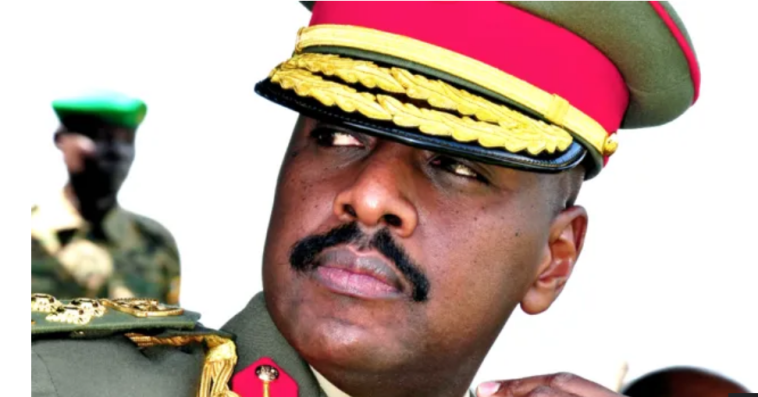In the rich tapestry of African politics, the past often weaves threads of insight for the present. A fascinating parallel emerges between Jacob Zuma’s masterful manoeuvres within South Africa’s African National Congress (ANC) and General Muhoozi Kainerugaba’s potential ascent in Uganda. Zuma’s bold rebellion against President Thabo Mbeki in 2005 offers a striking blueprint for how Muhoozi’s Patriotic League Uganda (PLU) could challenge the dominance of the National Resistance Movement (NRM) in the highly anticipated 2026 elections.
In June 2005, at the ANC’s National General Council (NGC) meeting, Jacob Zuma and his allies ignited the rebellion against President Thabo Mbeki. The pivotal moment arrived on June 16, 2005, when Mbeki, having just dismissed Zuma as deputy president following a corruption verdict, faced a storm of boos and jeers at Mbombela Stadium. Unfazed by the setback, Zuma skilfully sidestepped the ANC’s disciplinary lines, creating parallel structures that would soon be known as the Zuma coalition. This powerful alliance of political forces and emerging entities operated outside the ANC’s formal frameworks, paving the way for Zuma’s eventual ascent to power.
These same tactics were on display in the recent May election. To mount a formidable rebellion against Ramaphosa’s ANC, a party Zuma once vowed to remain loyal to until death, he strategically stepped outside its formal structures, founding the Umkhonto WeSizwe Party (MK). Zuma masterfully crafted a narrative that the ANC had strayed from its mission, claiming it was now under the control of a white capitalist agent, Ramaphosa, whom he branded a sell-out. By doing so, he portrayed himself as the messiah who would restore the ANC to its original purpose of not only dismantling apartheid but also addressing the deep-rooted socio-economic challenges plaguing South Africa. This appeal to the party’s revolutionary heritage struck a chord with the ANC’s grassroots, sparking a movement that resonated with many.
Zuma cleverly tapped into the ANC’s rich heritage of struggle, positioning the MK as its true heir. By naming his party after the ANC’s military wing, he framed it as the continuation of the liberation struggle, the force that would finally fulfil the ANC’s original mission. Zuma also exploited a critical weakness within the ANC, the tendency to equate the party with its leader. This confusion led many within the ANC to focus on defending Ramaphosa rather than actively campaigning. Zuma set the trap by branding Ramaphosa as a sell-out, redirecting the narrative from the party’s goals to its leadership failures.
Furthermore, Zuma played on narrow Zulu nationalism, a strategy that not only helped him oust Mbeki but also contributed to the ANC’s loss of influence in KwaZulu-Natal and other provinces in the recent elections. While the ANC spoke of renewal, Zuma presented MK as the true renewal the party needed. At MK rallies, military men marched alongside the Zulu king, blending modernity with tradition. He positioned MK as the party for the poor, capitalizing on the ANC’s vulnerabilities and securing his victory in KZN and other areas.
In a display of strategic brilliance that would make Machiavelli proud, General Muhoozi Kainerugaba is following a playbook strikingly similar to Jacob Zuma’s. Leveraging his widespread popularity as the president’s son and his rapid, albeit controversial, rise through the military ranks, Muhoozi is orchestrating a political manoeuvre that could dramatically alter Uganda’s future. Often regarded as President Museveni’s chosen successor, Muhoozi has already begun laying the groundwork in ways reminiscent of Zuma’s tactics.
Over the recent past, Muhoozi’s birthday celebrations have become grand spectacles across Uganda, drawing significant popular support and signalling his presidential aspirations. These events have been more than mere festivities; they’ve served as platforms where Muhoozi’s rhetoric as a future leader is unmistakable. His rapid ascent through military ranks and his influence over the army, whose welfare he fervently champions, mirror Zuma’s cultivation of loyalty within the ANC’s structures.
Muhoozi is strategically tapping into the dissatisfaction brewing within Uganda, much like Zuma did in South Africa. He has openly criticized the corruption within his father’s government, positioning himself as a reformer who could bring change. This audacity strikes a chord with Uganda’s youth, who have grown weary of the status quo and longing for change. Even President Museveni couldn’t ignore it, he publicly contrasted Muhoozi’s uncompromising stance with his own more measured, lenient approach.
While Museveni’s leadership often reflects caution and contemplation, Muhoozi purports to resonates with the impatience and energy of the younger generation. His preference for swift, decisive action sometimes even impulsive, mirror the desires of a youth eager for rapid transformation. This alignment with the younger demographic has not only garnered their support but also positioned Muhoozi as a formidable challenge to the NRM, as he seemingly embodies the very change many feel the ruling party has failed to deliver.
Muhoozi has further strengthened his position by establishing the Patriotic League Uganda (PLU), a strategic move that enables him to advance his agenda outside the rigid confines of the NRM’s disciplinary mechanisms. This new platform provides him with the freedom to champion his vision for Uganda, unburdened by the traditional party structures that often stifle innovation. The PLU not only gives Muhoozi a distinct voice but also resonates deeply with a young, disillusioned electorate eager for fresh leadership. This parallel structure poses a significant threat to the NRM, as it offers a dynamic alternative that many young Ugandans find increasingly appealing, further amplifying Muhoozi’s influence which is in many ways a threat to the ruling party’s dominance.
Muhoozi’s rising influence has triggered a palpable shift within the ruling NRM. Young MPs and emerging politicians have begun gravitating towards him, recognizing the momentum he carries. This tide unmistakably shows how Muhoozi now commands significant support not only among the youth within the NRM but also across opposition circles. His ability to unite these diverse factions under a common vision makes him a formidable force, one whose influence is reshaping the political landscape and challenging the established order.
A segment of young Ugandans yearning for change has found a compelling reason to rally behind Muhoozi. Disillusioned with the possibility of President Museveni ever conceding power to the opposition, they see Muhoozi as the most viable path to real prospect of ever seeing another president. These youths believe that, as Museveni’s son, his father would be less likely to resist his rise. This sentiment has fuelled a growing wave of support, as many see Muhoozi not just as a candidate, but as the bridge between the old guard and the change they desperately seek.
As the 2026 elections loom, it is increasingly possible that General Muhoozi Kainerugaba may not directly contest against President Museveni for the presidency. Instead, the electoral battle could unfold in the parliamentary arena, where a vibrant contest is expected between those aligned with Muhoozi and his Patriotic League Uganda (PLU) and those loyal to the traditional NRM. This dynamic shift promises a captivating political landscape, with Muhoozi’s allies likely to emerge as a dominant force in the next parliament. His growing influence and the strategic positioning of the PLU suggest that many future MPs will be supporters of Muhoozi, setting the stage for a legislature that reflects his vision and ambitions. This emerging scenario could dramatically reshape Uganda’s political contours, highlighting a transformative moment in the nation’s democratic evolution.
With Muhoozi emerging as a formidable contender, the stage is set for a dynamic and transformative battle. The upcoming elections will see a fierce contest between Kataha, Rwabogo, and Museveni’s NRM on one side, and General Saleh alongside Muhoozi’s Patriotic League Uganda (PLU) on the other. This emerging dichotomy highlights a crucial juncture in Uganda’s political journey, a clash between the entrenched legacy of Museveni’s leadership and the fresh, ambitious vision represented by Muhoozi and his allies. As the 2026 elections draw near, the competition promises to be both thrilling and decisive, potentially charting a new course for Uganda’s future.
This post was created with our nice and easy submission form. Create your post!






